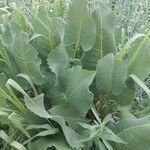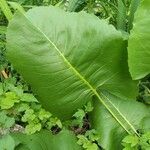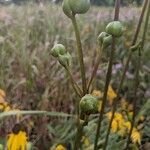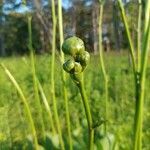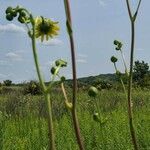Plants scapiform, (40–)100–250+ cm; taprooted. Stems terete, glabrous. Leaves: basal persistent, petiolate; cauline alternate, petiolate or sessile; blades cordate, deltate, lanceolate, ovate, or sagittate, 3–40 × 1–40 cm, sometimes (proximal) pinnately lobed, bases attenuate, cordate, hastate, round, or truncate, ultimate margins coarsely toothed or entire, apices acuminate, acute, or obtuse, faces glabrous or scabrous. Phyllaries 23–33 in 2–3 series, outer appressed, apices obtuse to acute, abaxial faces glabrous. Ray florets 17–29; corollas yellow. Disc florets 120–140; corollas yellow. Cypselae 7–13 × 4–10 mm; pappi 0–1 mm.

